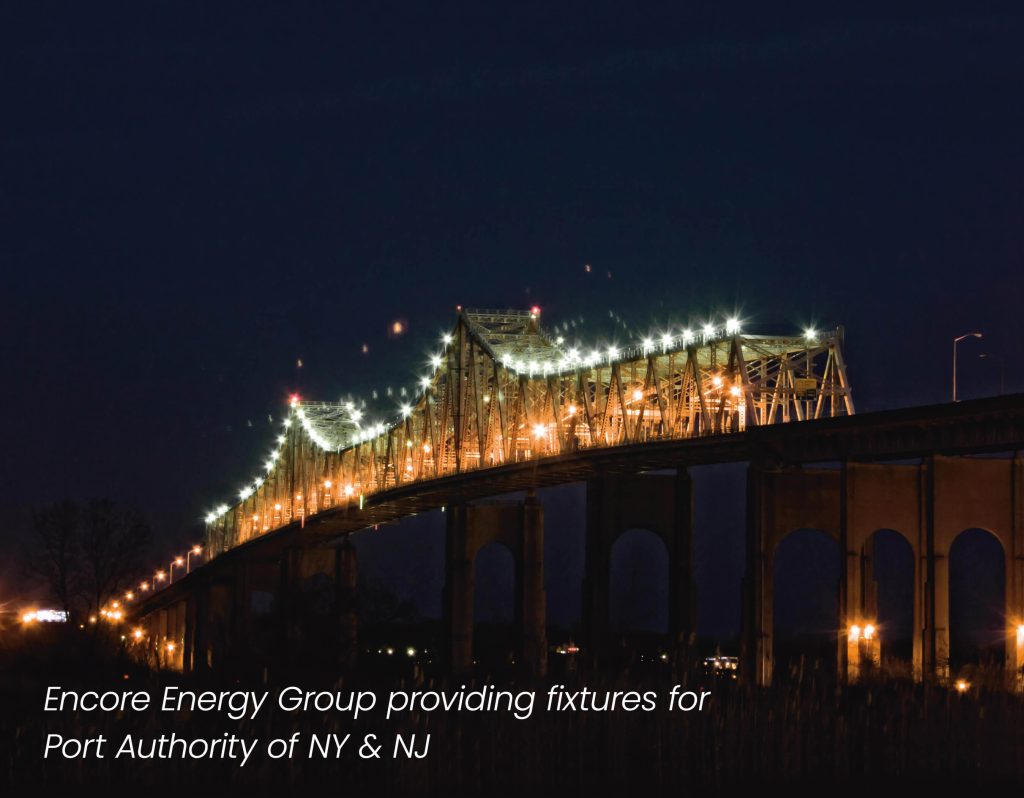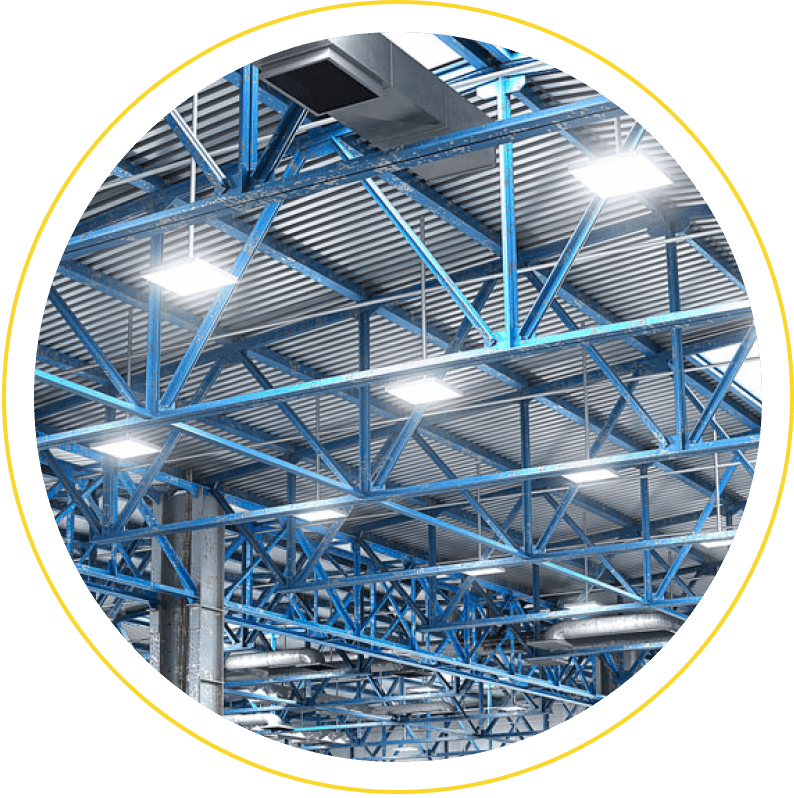
About LED Lighting
LEDs (light-emitting diodes) are semiconductors that produce light efficiently when electricity passes through them. They are the foundation of energy-efficient lighting upgrades, widely used across industries to cut costs, improve visibility, and reduce carbon emissions.
Tools
State Wide Energy Guide & Rebate Programs
FAQs
Light Emitting Diodes, regularly called LEDs, are genuine unsung heroes in the today’s world. They do many distinctive jobs and are found in all different types of gadgets. In addition to everything else, they form numbers on digital clocks, transmit data from remote controls, light up watches and let you know when your devices are turned on. Grouped together, they can form pictures on a large flat TV screen or light up an entire area while replacing old fashioned filament lights.
Essentially, LEDs are simply small lights that fit effortlessly into an electrical circuit. However, unlike common incandescent bulbs, they don’t have a filament that will wear out and they don’t get particularly hot. They are lit up only by the movement of electrons in a semiconductor material, and they keep going as long as a standard transistor. The lifespan of a LED surpasses the short life of a incandescent bulb by thousands of hours.
LED lights are the next generation of lighting that save energy, reduce maintenance and replacement costs and help protect the environment. They also last much longer than traditional lighting.
LED lights can match your existing lighting in terms of brightness and color. But, as with any product, there can be poor quality and high quality LED lights. You may have had experience with poor quality products already that do not match your existing lighting. Encore Energy Group will help you select the correct fixture to replace your existing lighting in terms of brightness and color temperature.
LED lighting can save up to 90% of the electricity used by incandescent and halogen lights and up to 50% of electricity used by fluorescent lights.
LED lights are being used where the lighting is on for a long time such as hotels, restaurants, shops, factories, auto dealerships and outdoor lighting.
Around 80-90% of the energy emitted from incandescent bulbs is converted to heat instead of light. LED lighting is about 85% more efficient than incandescent lights and hence do not need as much energy to product the same amount of light. LED lights are also designed to last about 50 times longer than incandescent lighting.
Unlike LED lights, most fluorescent lights and compact fluorescent lights (CFLs) harbor hazardous materials, such as mercury. This requires their careful and proper disposal, ensuring that they do not contaminate landfill sites. As most cannot be dimmed, Fluorescent lights may suffer from flickering. Unfortunately, people can be sensitive to this effect – resulting in eye-strain, migraines and other head-aches. LED lights, like those from Encore Energy Group, utilize solid-state technology enabling stable dimming with no flickering. Fluorescent lights may take noticeable time to reach optimum brightness, a problem that is compounded in cold conditions. LED lights are instant-on in any environment – even inside cold rooms and freezers.
Good quality LED lights can have a lifetime of 50,000 hours or more but the average is around 35,000 hours. But this all depends on their design and how they dissipate heat from the LED chip. Depending on how many hours they are used a day, Encore Energy Group lights can last as long as 20 years. Unlike other lighting products LED lights do not completely fail – they get dimmer. At 50,000 hours of use (or their rated lifetime), an LED light will be designed to provide at least 70% of its initial light output (LOR). The lifetime is dependent on many different factors including fixture design, LED chip type, ambient temperatures and fixture design. Actual life of an LED is complicated to calculate and should be based on LM-80 measurements (calculated by independent testing labs) of the LED sources. Well-designed LED lights get the optimum balance between light output and longevity.
The upfront cost of LED lights is higher than conventional lights but they save a lot of money over time from reduced energy usage, low replacement and maintenance costs. But how do you define expensive? Is it the up-front cost or is it the running cost of the light over time or the cost to change the light once it has failed? If it is a new building, installing LED lighting is sometimes the same cost as traditional technology which means you will start to save from the very beginning.
Figures released by the U.S Department of Energy estimate that embracing LED lighting on a large-scale by 2025 will:
- See a 62% reduction in energy usage.
- Result in 258 million metric tons of carbon emissions wiped out.
- Greatly reduce the amount of materials being put into landfills
- Mean no need to build 133 new power plants.
- Overall it would save the US over $280 billion!
The Energy Independence and Security Act of 2007 is designed to implement sweeping changes to energy policies in the United States. The stated mission of the act is “to move the United States toward greater energy independence and security, to increase the production of clean renewable fuels, to protect consumers, to increase the efficiency of products, buildings, and vehicles, to promote research on and deploy greenhouse gas capture and storage options, and to improve the energy performance of the Federal Government, and for other purposes.” Section 321 of this act addresses new efficiency standards regarding “general service incandescent lights.”
Encore Energy Group strongly recommends that business, industrial and commercial lighting consumers choose to proactively adjust their lighting purchases in order to start saving on energy costs now.
Because Encore Energy Group lighting systems don’t emanate heat the way an incandescent or halogen light bulb does, the heat produced from the power supplied into the product must be drawn away from the LEDs by a heatsink. A heatsink is a passive device that absorbs the produced heat and disseminates it into it’s surroundings. That keeps LED lights from overheating and failing. In New Jersey, thermal management is probably the most vital factor in the successful performance of an LED product over its lifetime. This is because the higher the temperature the LED lights operate at, the more quickly the light will degrade, which shortens the lifespan. This is why in NY, CT and NJ Encore Energy Group sells the most well known and reliable LED light fixtures and assemblies.
LED products use a variety of unique heat sink designs and configurations to manage heat, so they may look very different from each other. Regardless of the heat sink design, all LED products that have earned the ENERGY STAR have been tested to ensure that they properly manage the heat so that the light output is properly maintained through the end of its rated life.
Learn about LED lighting and how it is different in several ways from incandescent and compact fluorescent lighting. About LED lighting products sold at Encore – they use light emitting diodes to produce light very efficiently. An electrical current passed through semiconductor material illuminates the tiny light sources we call LEDs. The heat produced is absorbed into the heat sink and safely removed from the LED to increase the light’s lifespan.
Typically, LED colors include amber, red, green, and blue. Colored LEDs are widely used as signal lights and indicator lights, like the power button on a computer. A lesser know fact is that “white” LED light doesn’t truly exist. To get the kind of white lights we use for lighting our homes and offices, different color LEDs are covered with a phosphor material that converts the color of the light to white. The phosphor is the yellow substance you can see on many LED products.
LEDs are now being incorporated into fixtures and retrofit kits for general lighting uses in New York because they are small and provide unique design opportunities. Some enclosed, complete Encore Energy Group light fixtures have LEDs built–in as a permanent light source. LEDs are “directional” light sources so they emit light in a specific direction, unlike incandescent and compact fluorescent bulbs which emit heat and light in all directions. For this reason, LED lighting sold in Fairfield, NJ is able to use light and energy more efficiently in many applications. Incandescent bulbs produce light using electricity to heat a metal filament until it becomes “white” hot and as a result, incandescent bulbs release 90% of their energy as heat, which is essentially wasted energy. LED replacement fixtures save on energy that others waste.

Book Your Complimentary Lighting Evaluation
Encore’s energy evaluator will perform a close examination of your current lighting setup and present your business with an extensive lighting evaluation report, including evaluating changes and a careful breakdown of your existing lighting energy utilization and current expense. We will explain the LED lighting energy retrofit solutions accessible to you at truly NO COST to you whatsoever.
